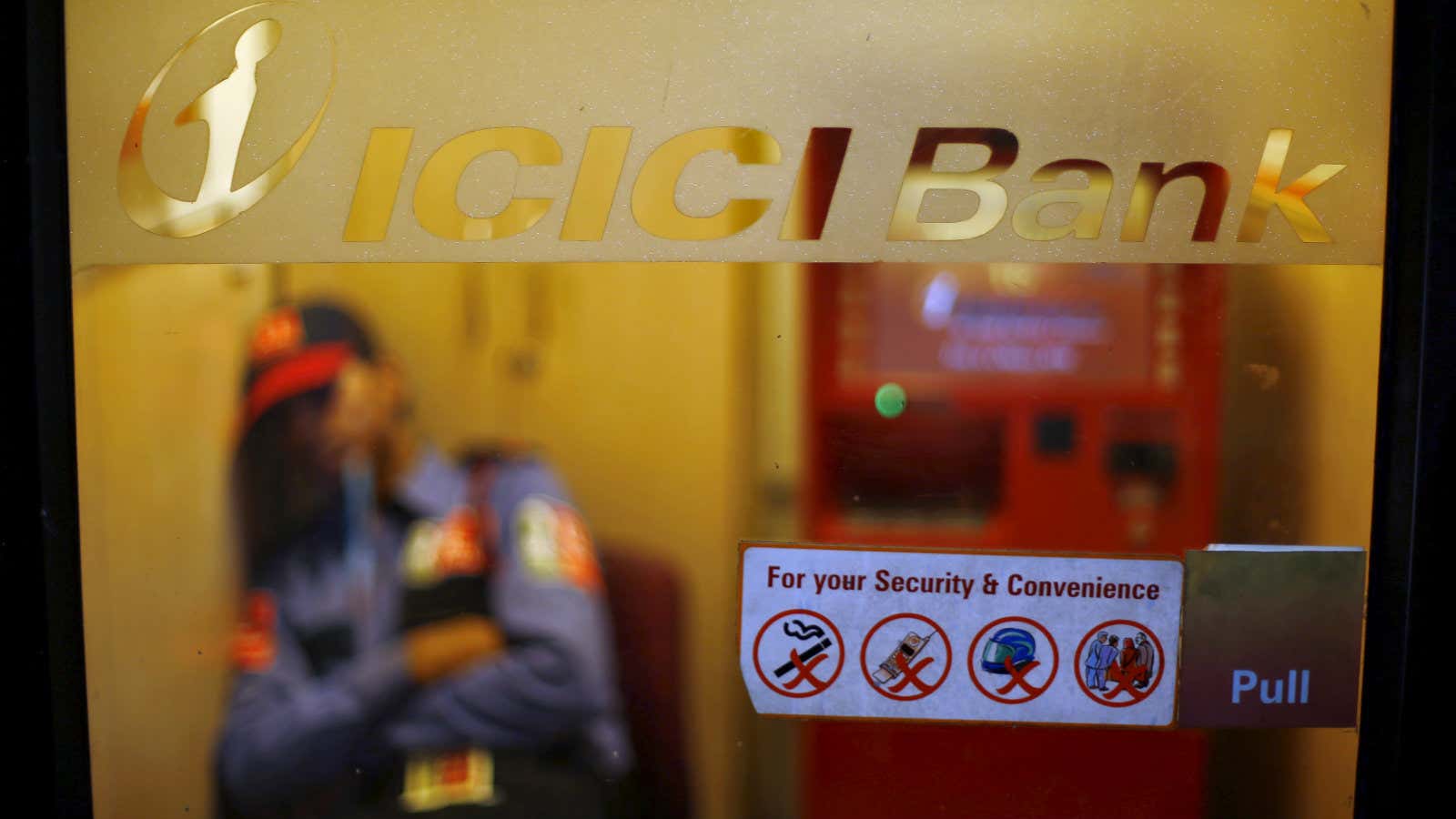The Reserve Bank of India recently went out to survey the condition of some 4,000 automated teller machines (ATMs) across the country, and it came back with some fairly grim news: One out of three ATMs in India don’t work.
“Survey results are not comforting in any way,” S S Mundhra, deputy governor of the RB, said at a conference in Mumbai on May 23. ”Violation of regulatory instructions on display material, facilities for differently abled etc. were also observed. We will be taking necessary supervisory action in this regard.” The survey covered a fair representation of geographies and bank categories.
One reason for this dismal management of ATMs in India is the high cost attached to it. Banks have often complained that the costs of maintaining and setting up of an ATM is not covered by usage charges. Banks charge varying amounts for ATM withdrawals in India, after the initial free usage.
A 2014 study by the Indian Institute of Technology-Bombay (pdf) showed that a bank has to spend Rs50,000 ($741) on each ATM every month. The main components include security, technology and rental costs.
As of Feb. 2016, India had a total of 197,327 ATMs, RBI data shows (pdf). Out of this, 100,671 were deployed on-site while the rest were off-site. Here’s the distribution of ATMs across the country:
And here are the top 10 states with the highest number of ATMs in India:
With a view to increase the penetration, in May 2014, the RBI allowed three non-banking finance companies to set up white-label ATMs—machines that only dispense cash. Meanwhile, prime minister Narendra Modi’s flagship Jan Dhan Yojna—people’s wealth scheme—launched in 2014, also outlined setting up of 20,000 new ATMs in the country.
But both schemes may be rendered somewhat pointless if a third of those ATMs actually don’t end up working.




